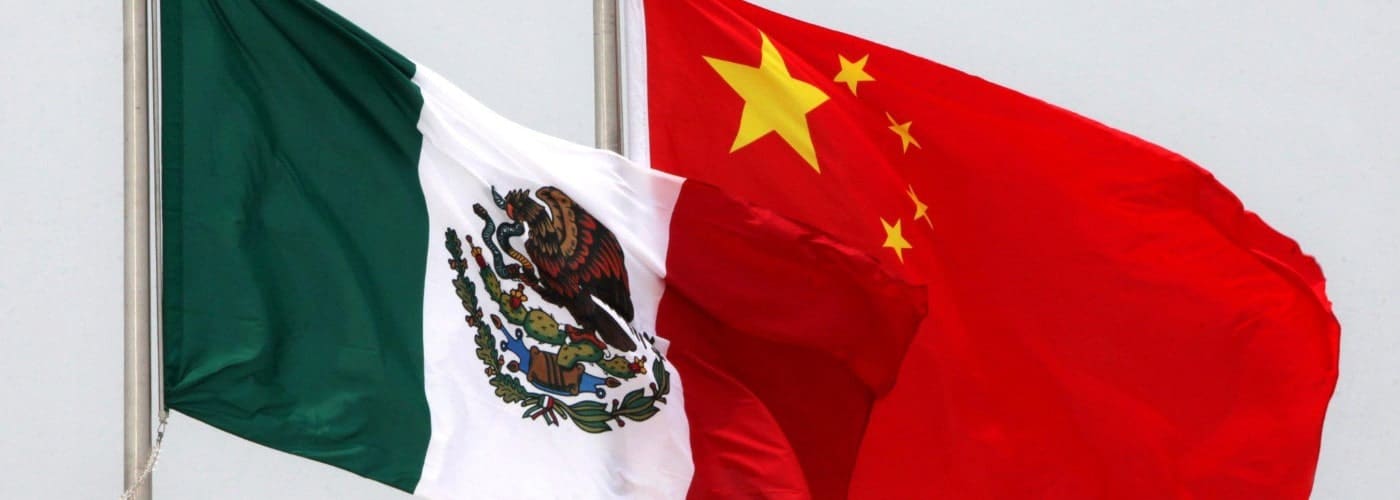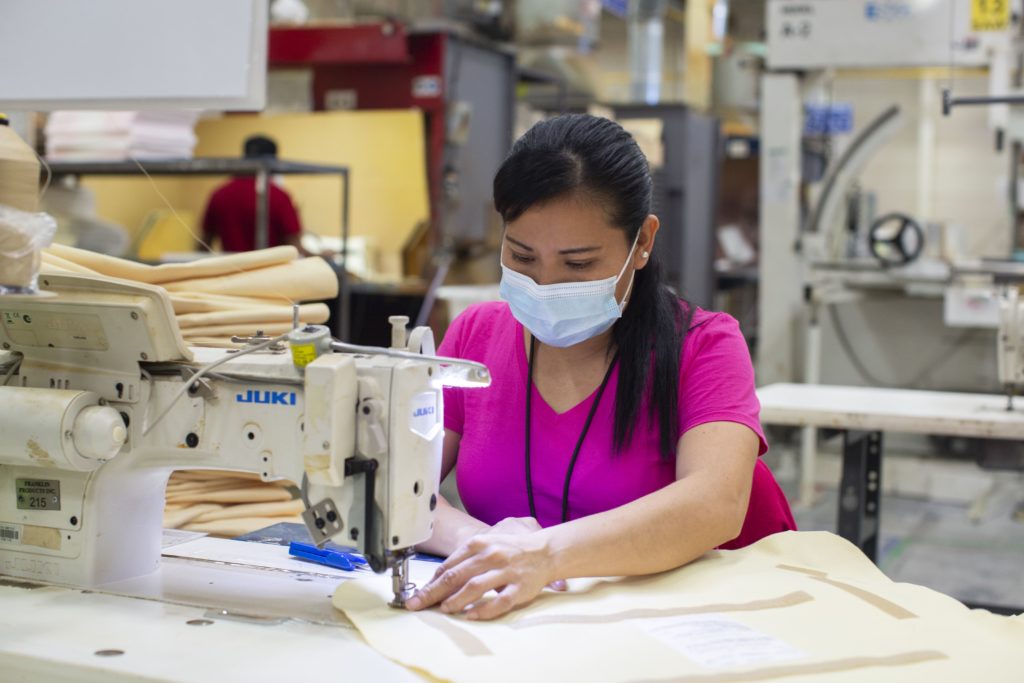
Avoid China Tariffs
Reshoring manufacturing in Mexico vs. China has many advantages. We at NovaLink believe manufacturing in Mexico is the best option for cost and quality.
China Tariffs Eating Your Profits?
When faced with the choice of paying China tariffs or having your operations close to home in North America, NovaLink believes that companies making the decision to move manufacturing out of China is the smartest and best choice. President Joe Biden imposed new tariffs on Chinese electric vehicles, advanced batteries, solar cells, steel, aluminum, and medical equipment in May of 2024. It is likely that electric vehicle tariffs will quadruple - from 25% to 100% - over the next few years.
The goal of this tax, and the other China tariffs, is to make Chinese products more expensive for American consumers and businesses to buy. If your company is currently manufacturing goods in China, your goods will be subject to tariff rates (depending on the product you are importing), which will mean you will either have to raise the price of your goods and pass the expense to your customers or accept a cut into your profit margins.
However, there is viable solution for companies who may be facing the China tariffs crisis: moving manufacturing to Mexico. With the new trade agreements between Mexico, Canada and the United States now in place, manufacturing goods and services between these nations is now easier and more cost effective than ever:
- There are no tariffs for products made in Mexico and imported into the United States that meet USMCA rules of origin requirements.
- Lower shipping time for goods to get into the United States
- Lower average cost of shipping
- Lower number of days to start manufacturing operations
- Cost-effective ad more productive labor pool

NovaLink Manufacturing Facility Video
NovaLink has released a new video highlighting the versatility of their manufacturing facility in Matamoros, Mexico. In this video, you will be able to see the factory and its associates in action. The video, which was filmed on the floor of the manufacturing facility, illustrates the variety of manufacturing operations and the wide range of skills represented by the workforce. As well as demonstrating NovaLink's commitment to first class manufacturing, the video also emphasizes its commitment to safety protocols for the health of its workers and clients.
Why Are Companies Moving Manufacturing out of China?
Manufacturing is a major industry in China, as we know. A third of supply chain leaders plan to move manufacturing out of China by 2023, according to Gartner research. Here’s why so many companies are moving out:
- Companies learned from the recent Covid-19 pandemic that they cannot rely on just one supplier. Meanwhile, governments across the globe are trying to get companies out of China. Many companies are considering Mexico as a potential location.
- In 2018, the United States imposed tariffs of 25% on Chinese goods. Importing goods from China into the US was therefore very expensive
- Three or four decades ago, Chinese labor was one of the cheapest in the world. In recent years, it has greatly increased to $14000/year, which is a huge increase. Manufacturing in China has become more expensive.

Source: National Association of Manufacturers. NAM Releases USMCA State Data Sheets
USMCA
According to Investopedia, USMCA is “…a trade deal between the three nations which was signed on November 30, 2018. The USMCA replaced the North American Free Trade Agreement (NAFTA), which had been in effect since January of 1994. Under the terms of NAFTA, tariffs on many goods passing between North America’s three major economic powers were gradually phased out.”
There are many reasons why USMCA is significant, but the most important reason is the ability to save money for US businesses. Tariffs have been reduced between the nations; investments have been encouraged in North American industrial buildings, and international markets have been opened. The USMCA provides duty-free treatment for goods that qualify under its rules of origin, which avoid two percent tariffs.
The USMCA has also significantly strengthened U.S. supply chains. COVID-19 and increasing competition with China have highlighted the vulnerability of relying on Chinese supply chains. According to the Brookings Institute:
“The significance of USMCA is clear. Canada and Mexico are the United States’ largest export markets: 23 percent of U.S. exports go to Canada and Mexico (versus 5 percent to China), over 70 percent of Mexican exports are sent to the U.S. and Canada, and 62 percent of Canadian exports are to the U.S. and Mexico. Trade among the countries provides key inputs into regional supply chains’ value added (40 percent U.S. value add versus 5 percent China). “
Made in China Myths
Select any of the facts to learn the truth about manufacturing in China.
Are Chinese Facilities Cheaper?
The cost of facilities in China has gotten so high that a Chinese company opened an industrial park in Mexico instead of China.
Is Chinese Labor is Cheaper?
According to Boston Consulting Group, workers in Mexico's manufacturing sector made 60% more than their Chinese counterparts in 2000. Now they earn 11% less.
Is Chinese Labor is More Productive?
"Mexico has continued to stay more productive than China per worker,” Justin Rose, a partner at Boston Consulting Group in Chicago, told Quartz. “Sometime in 2011 or 2012, from a labor-cost perspective, it became cheaper to put manufacturing capacity in Mexico than in China.”
Why U.S. Companies Are Moving Their Supply Chains From China to Mexico
Does Mexico have supply chain issues? In spite of the fact that all exporting companies face supply chain challenges, Mexico seems to face fewer challenges than other manufacturing countries, such as China. Supply Chain Brain has a list of reasons why companies are moving their supply chains from China to Mexico.
Ground Transport
Goods can be imported from Mexico via ground transport in a matter of days or even hours. This is never an option for goods manufactured in China, from which everything must come by ocean or air. The former is very time consuming (it can often take weeks), and the latter is very expensive.
"Trusted Partner" Status for Customs
The U.S. offers two programs that help facilitate faster and easier Customs processing for U.S.-Mexico trade: FAST and C-TPAT. Initiated after 9/11, FAST is a trusted traveler/trusted shipper program that allows expedited processing for commercial carriers who have completed background checks and fulfill certain eligibility requirements (much like TSA Precheck for air travelers). FAST certification is for drivers; C-TPAT is a broader program that shippers must apply for. Once a company is certified for C-TPAT, its drivers can then apply for FAST. There are no such programs for U.S.-China trade.
A Transparent Landscape
There are also new modern options for transport that make Mexico attractive. Companies can coordinate door-to-door transportation between the U.S. and Mexico, including procurement of trucks on both sides of the border, customs clearance, insurance, financing, and reporting. This allows manufacturers to focus on their core competency, rather than logistics, and can also reduce the need for big in-house shipping and logistics teams.
Small Language Barrier
Spanish is the second-most common language spoken in the U.S., making it relatively easy to communicate with partners in Mexico (and find bilingual staff and vendors).
Spanish is the second-most common language spoken in the U.S., making it relatively easy to communicate with partners in Mexico (and find bilingual staff and vendors).
Are You Ready to Begin Manufacturing in Mexico? Contact Us for a Free Consultation
Contact us and let's start building something!
Use the details to the right to contact NovaLink.
Office
6665 Padre Island Highway
Suite B
Brownsville, Texas 78521
Hours
Mon-Fri: 8am - 5pm